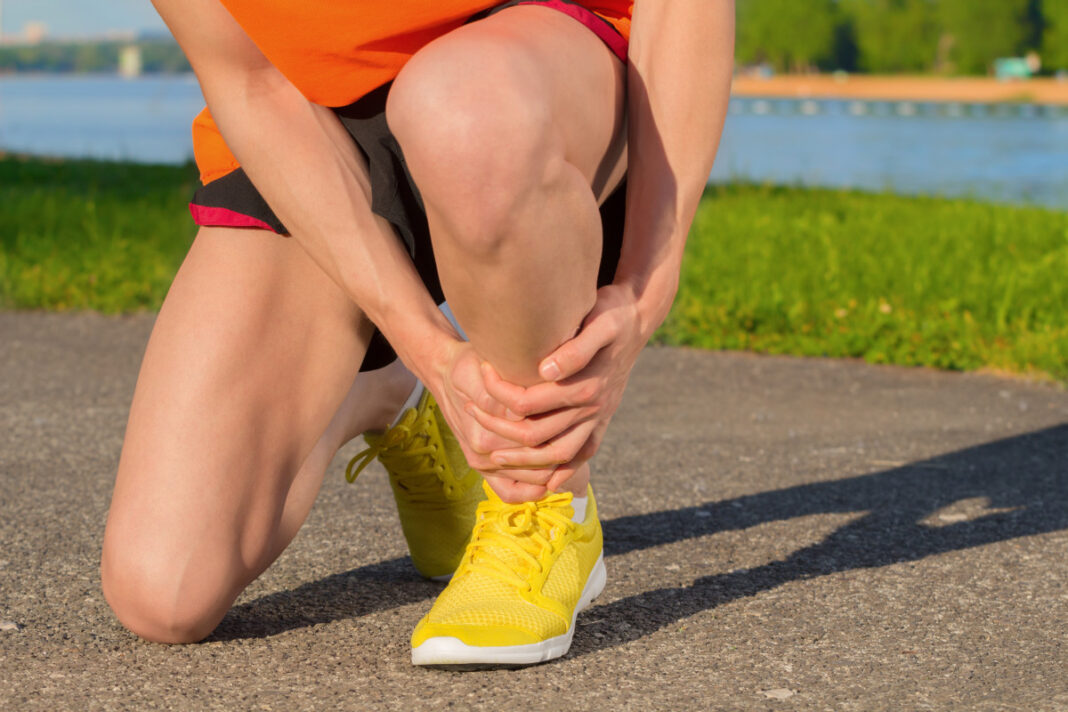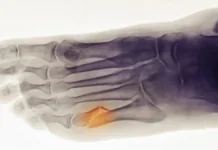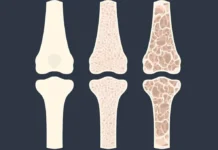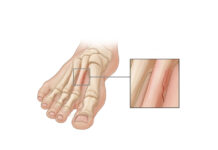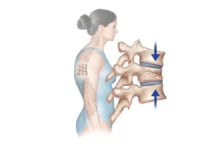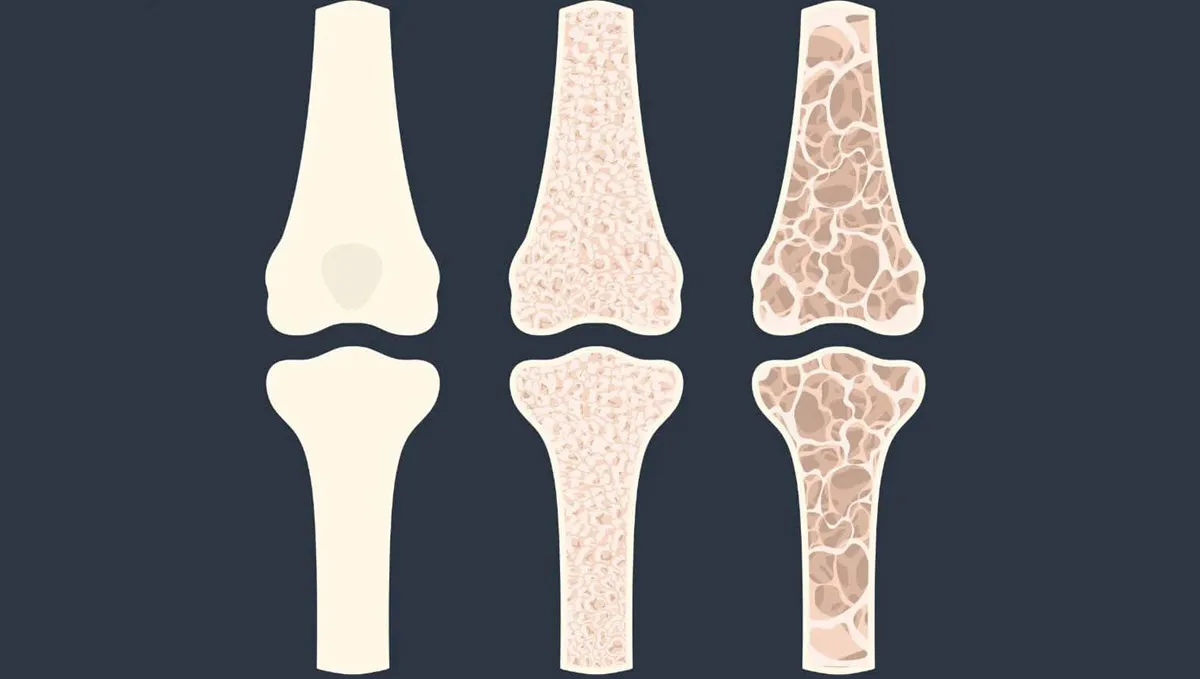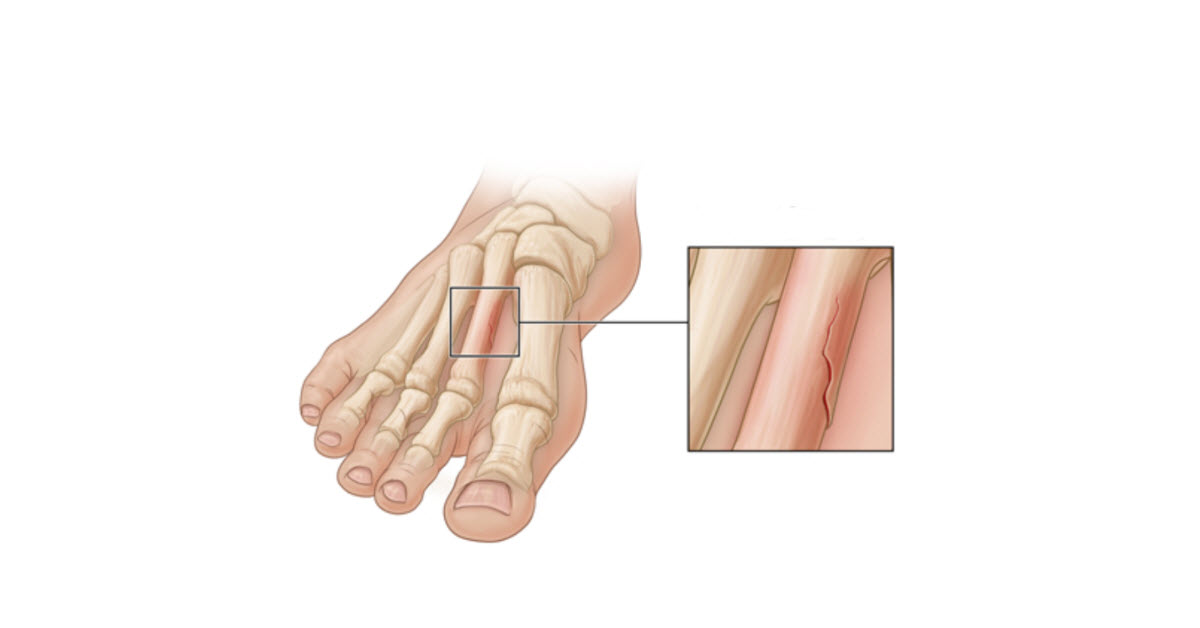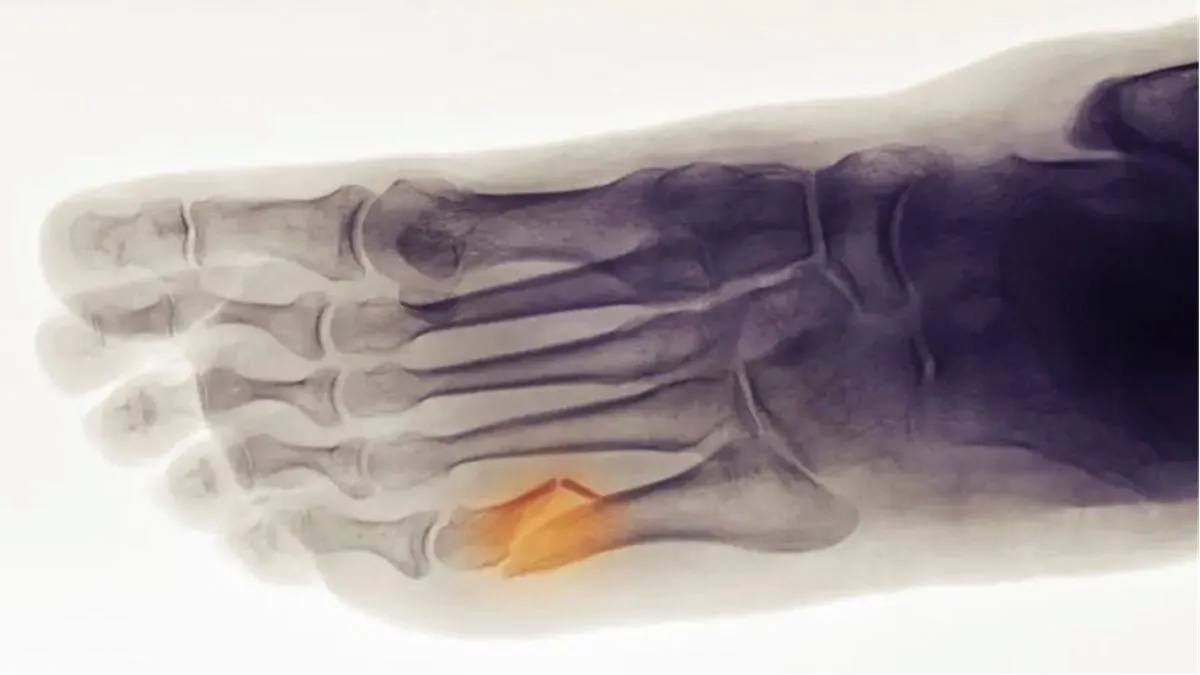Tibial periostitis is considered a clinical syndrome defined in terms of pain and discomfort in the anterior leg resulting from repetitive activity on hard surfaces or excessive and forced use of the foot flexors.
Introduction
Shin splints, also known as medial tibial stress syndrome, is a painful condition that affects the inner portion of the shin bone, the bone located on the front side of the leg between the knee and ankle. This condition is commonly seen in runners, dancers, military personnel, and others involved in repetitive shock or stress activities on the leg.
Shin splints are characterized by inflammation of the periosteum, the thin membrane that covers the bone. The precise causes of this inflammation are not always clear, but it is often thought to result from overuse or excessive stress on the muscles, tendons, and bones of the leg. Contributing factors may include a sudden change in the intensity or frequency of physical activity, poor shoe selection, improper training technique, or poor biomechanics.
Symptoms of shin splints usually include widespread pain or discomfort along the inner part of the shin. This pain can be felt during physical activity, but it can also persist after you stop exercising. Often, the pain intensifies over time, and some individuals may experience sensitivity to touch along the shin.
Treatment of shin splints usually involves multifaceted approaches. It may include rest, modification of physical activity, application of ice to reduce inflammation, use of nonsteroidal anti-inflammatory drugs (NSAIDs) to relieve pain, and rehabilitation techniques, including including stretching and muscle strengthening exercises.
Prevention of shin splints often involves adjustments in workout routine, wearing appropriate footwear, correct workout technique, and gradual progression in the intensity and frequency of physical activity. In the event of persistent or severe symptoms, it is recommended to consult a health professional, such as a doctor or osteopath, for an accurate diagnosis and a suitable treatment plan.
Type of periostitis
Shin splints can be classified into two main types: anterior shin splints and posterior shin splints. These distinctions are based on the specific location of periosteal inflammation along the tibia. Here is a brief explanation of each type:
Anterior Tibial Periostitis
- Location: It occurs on the front side of the shin, affecting the front part of the leg.
- Possible Causes: Anterior shin splints are often associated with high-impact activities, such as running, jumping, or other repetitive movements that strain the muscles and bones in the front of the leg.
- Symptoms: Symptoms may include diffuse pain along the front edge of the shin, exacerbated during physical activity. The pain may also persist at rest.
Posterior Tibial Periostitis
- Location: It occurs on the back side of the shin, affecting the posterior part of the leg.
- Possible Causes: Posterior shin splints can result from excessive pressure on the muscles and bones in the back of the leg, often related to activities involving repeated plantar flexion movements.
- Symptoms: Symptoms usually include pain along the back edge of the shin, especially during activities that use the back muscles of the leg. Pain may also be present at rest.
It is essential to note that although these distinctions may be useful from a clinical perspective, symptoms and treatment may vary from person to person. An accurate diagnosis, based on a thorough medical evaluation, is crucial in determining the specific type of shin splints and developing an appropriate treatment plan. If symptoms persist, it is recommended to consult a healthcare professional.
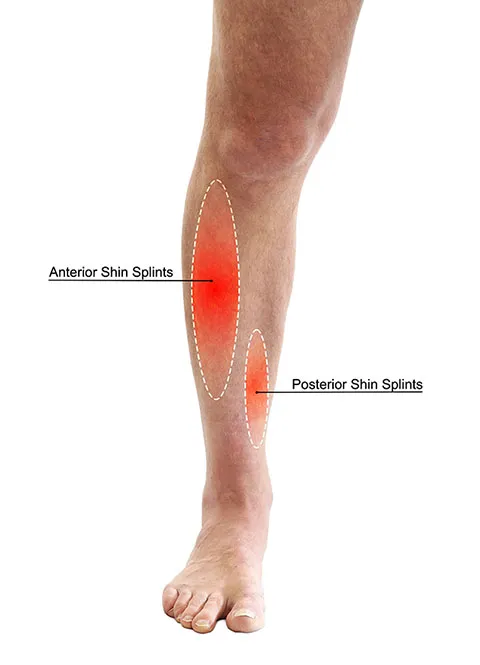
Anterior shin splints affect the front part of the tibia and are often related to overuse of the anterior tibialis muscles, typically seen in activities like running or high-impact sports. Pain is usually felt along the front of the leg, above the ankle, and below the knee.
Posterior shin splints, on the other hand, involve the inner part of the tibia and are generally caused by an imbalance in the calf muscles, which puts stress on the inside of the leg near the ankle.
Both types of shin splints are commonly triggered by excessive physical activity, improper footwear, or hard surfaces, leading to inflammation and pain in these areas.
Causes
The origins of shin splints are generally linked to overuse of the tibia and surrounding muscles. Various factors contribute to this condition:
- Overuse or Intense Physical Activity: Associated with repetitive activities or sudden training intensity, such as running, brisk walking, jumping, and other high-impact activities.
- Changes in Training Environment: An abrupt change from a flat surface to harder surfaces can increase stress on the shin.
- Biomechanical Problems: Abnormalities such as excessive foot pronation, muscular imbalances or poor training technique.
- Wrong Shoe: Using sports shoes that are unsuitable, worn or without adequate support.
- Muscle Weakness: Weakening of the muscles surrounding the tibia, particularly the tibialis anterior muscle, increasing the tension on the periosteum.
- Anatomical Factors: Anatomical predisposition due to the structure of the foot, leg or other anatomical factors.
- Improper Warm-up or Inadequate Stretching: Insufficient warm-up before physical activity or inadequate stretching of muscles, increasing the risk of injuries, including shin splints.
- Underlying Medical Conditions: Certain medical conditions like osteoporosis, which weaken bones, increase risk.
It is crucial to note that shin splints often result from a combination of these factors.
Risk factors
- Overuse: One of the most common risk factors is overuse or excessive practice of high-impact physical activities, including running, repetitive jumping, or other activities that put intense strain on the muscles and bones of the leg.
- Changes in Activity: A sudden change in the intensity, duration, or frequency of physical activity may increase the risk of shin splints. This may include a rapid increase in running distance or a sudden intensification of training.
- Improper Training Technique: Improper training technique, such as poor posture or ineffective running technique, can contribute to excessive stress on the shin.
- Poor Shoe Choice: Athletic shoes that are inappropriate, worn, or do not provide adequate support can contribute to the development of shin splints.
- Abnormal Biomechanics: Some individuals may have abnormal biomechanics, such as excessive pronation (inward rolling) or supination (outward rolling) of the foot, which can increase the load on the shin.
- Muscle Weakness or Muscle Imbalance: Muscle weakness, particularly in the stabilizing muscles of the leg, or muscle imbalance can lead to uneven distribution of forces during physical activity.
- Poor Flexibility: Poor flexibility of the leg muscles can contribute to excessive stress on the shin during physical activity.
- Pre-Existing Anatomical Conditions: Pre-existing anatomical conditions, such as one leg being shorter than the other, can increase the risk of developing shin splints.
- Age and Gender: Younger people, especially teenagers, are sometimes more likely to develop shin splints. Additionally, some studies suggest that women may be more at risk than men.
- Injury History: Individuals who have previously suffered from shin splints or other leg injuries may be more prone to developing this condition in the future.
Symptoms
The symptoms of shin splints vary in intensity from person to person, mainly related to pain and discomfort in the shin area. Here are common symptoms:
- Pain Along the Shin: Initially mild, it is located along the inner edge of the shin and may intensify over time.
- Pain During Physical Activity: Appears during or after high-impact activities such as running or brisk walking.
- Pain on Touch: Sensitivity to touch, with light pressure which may trigger or worsen the pain.
- Mild Swelling: Sometimes present depending on the severity of the inflammation.
- Pain at Rest: In advanced cases, pain may persist even at rest, impacting sleep and daily activities.
- Palp-Roll Sensitivity: Palp-Roll test carried out by the doctor, consisting of rolling the fingers along the tibia to assess sensitivity and trigger pain.
- Morning Pain: Some experience increased pain in the morning, combined with increased stiffness at night.
It is essential to note that shin splints can progress gradually, starting with mild pain that intensifies if the contributing factors are left untreated.
Diagnosis Diagnosis
- History (Medical History): The healthcare professional will collect detailed information about the patient’s medical history, including recent physical activities, changes in exercise intensity or frequency, type of shoes used, and any other factor that may be linked to the appearance of symptoms.
- Physical Examination: The physical examination focuses on the affected region, particularly along the inner portion of the tibia. The healthcare professional will assess pain, tenderness, presence of swelling, and perform specific tests to reproduce or worsen symptoms.
- Medical Imaging: In some cases, medical imaging tests may be recommended to confirm the diagnosis and assess the extent of the lesions. Commonly used imaging methods include x-rays, MRI (magnetic resonance imaging), and sometimes bone scans.
- X-rays: These can help rule out other bone and joint conditions, although shin splints are often not clearly visible on x-rays.
- MRI: MRI is particularly useful for visualizing soft tissues, bones and possible inflammation. It can provide detailed information on the presence of lesions in the shin area.
- Bone Scan: This test can be used to detect areas of increased bone activity, which can help confirm the presence of shin splints.
- Elimination of Other Possible Causes: Since pain along the shin may be associated with other conditions, such as stress fractures, muscle problems, or vascular problems, the healthcare professional will work to eliminate other possible causes of pain.
- Specialist Consultation: In some cases, a consultation with an orthopedic specialist, osteopath or sports doctor may be recommended for additional advice and to guide the treatment plan.
Risk Groups
- Athletes and Runners: Athletes, especially those participating in high-impact sports like running, jumping, basketball, soccer, and other repetitive activities, are more likely to develop shin splints due to stress repeated on the legs.
- Consideration: Runners should be mindful of their training progression, use of appropriate footwear, and variation of training surfaces to reduce the risk of overuse.
- Military: Members of the armed forces, due to intense physical training, prolonged marches, and frequent use of military footwear, may be at greater risk for the development of shin splints.
- Consideration: Military members may benefit from training programs that incorporate strengthening and flexibility exercises to reduce pressure on the legs.
- Dancers: Dancers, especially those who practice dance styles involving repetitive jumping and impactful movements, are susceptible to developing shin splints.
- Consideration: Attention to dance technique, proper footwear, and proper warm-up can help minimize risk.
- Individuals Involved in High-Impact Activities: Anyone involved in high-impact activities, such as high-impact aerobics, HIIT (high-intensity interval training), or other exercises requiring repetitive movements, may be at risk. risk.
- Consideration: It is important to progress gradually in these activities, vary the types of exercises, and take rest periods to allow the leg to recover.
- People with Abnormal Biomechanics: Those who have abnormal biomechanics, such as excessive pronation or supination of the foot, may be more likely to develop shin splints.
- Consideration: Shoes adapted to individual biomechanics, as well as orthopedic insoles if necessary, can help correct these anomalies.
- Growing Adolescents: Adolescents, due to rapid bone growth and increased physical activity, may be more vulnerable to shin splints.
- Consideration: Careful monitoring of adolescent training, with an emphasis on diversity of activities and rest periods, is essential.
Prevention of Tibial Periostitis
- Gradual Training Progression: Avoid sudden changes in training intensity, duration or frequency. A gradual progression allows the body to gradually adapt to physical stress.
- Variation of Activities: Incorporate a variety of physical activities to reduce constant stress on the same muscles and joints. This may include muscle strengthening exercises, low impact activities and stretching sessions.
- Muscle Strengthening: Incorporating muscle strengthening exercises, with an emphasis on the stabilizing muscles of the leg, can help improve stability and reduce pressure on the shin.
- Correct Training Technique: Be sure to use proper training technique, especially when running and high-impact exercises. Consult a fitness professional for advice on proper technique.
- Appropriate Footwear: Wear appropriate athletic shoes that provide adequate support. Choose shoes suited to your foot type and biomechanics to reduce pressure on the shin.
- Warm-up and Stretching: Practice a proper warm-up before physical activity, followed by stretching exercises to improve muscle flexibility. Flexible muscles can absorb stress better.
- Rest and Recovery: Give sufficient importance to rest and recovery between training sessions. Overexertion can increase the risk of injuries, including shin splints.
- Medical Consultation: If you experience persistent pain or symptoms of shin splints, consult a healthcare professional as soon as possible for an accurate diagnosis and treatment advice.
- Biomechanical Analysis: If necessary, consult a specialist for a biomechanical analysis. Gait abnormalities or foot problems can be corrected with orthotics or appropriate counseling.
- Hydration and Nutrition: Maintain proper hydration and a balanced diet to support overall health, including bone and muscle health.
Treatments and Care
- Rest: The first step in treatment is often relative rest, which means reducing or avoiding activities that exacerbate the pain. This allows the shin bone to rest and begin the healing process.
- Pain Management: Nonsteroidal anti-inflammatory drugs (NSAIDs), such as ibuprofen, may be prescribed to reduce pain and inflammation.
- Application of Ice: Applying ice to the affected area can help reduce inflammation. It is recommended to apply it for 15 to 20 minutes at regular intervals.
- Osteopath: An osteopath can recommend specific exercises to strengthen muscles, improve flexibility and correct biomechanics, helping to prevent recurrences.
- Orthotics: Orthopedic insoles or specific shoes may be prescribed to correct biomechanical abnormalities that contribute to shin splints.
- Ultrasound and Shockwave Therapy: These modalities can be used to promote healing by stimulating blood circulation and speeding tissue recovery.
- Infiltrations: In certain cases, corticosteroid infiltrations may be considered to reduce local inflammation.
Self-care and Home Management:
- Active Rest: Although rest is important, active rest, which involves non-impact activities like swimming, can maintain fitness while minimizing stress on the shin.
- Muscle Strengthening Exercises: Adopt a muscle strengthening exercise program targeting the stabilizing muscles of the leg to improve stability.
- Stretching: Incorporate regular stretching to improve the flexibility of the leg muscles.
- Training Control: Gradually reduce training intensity and vary activities to avoid overuse.
- Heat Application: Heat can be used before physical activity to increase blood circulation and prepare muscles.
- Maintaining a Healthy Weight: Maintaining a healthy weight reduces pressure on the legs and can help prevent recurrence.
- Changing Shoes: Use shoes appropriate for physical activity, and replace them when they show signs of wear.
- Medical Monitoring: Stay in touch with healthcare professionals to monitor progress, adjust the treatment plan if necessary, and get personalized advice.
Stretching
1.Standing Calf Stretch:
- Standing facing a wall, place your hands at shoulder height and extend one leg behind you.
- Keep your heel on the ground and slightly bend the knee of your straight leg.
- You should feel the stretch along the calf of the straight leg.
- Hold the position for 20 to 30 seconds and repeat on the other side.
2.Seated Shin Stretch:
- Sit on the floor with your legs extended in front of you.
- Bend one leg and place the foot of the other leg against the inner thigh of the bent leg.
- Reach the tips of the toes of the extended leg, keeping your back straight.
- Hold the position for 20 to 30 seconds and repeat on the other side.
3.Stretching the Tensor Fascia Lata (TFL) Muscle:
- Standing, cross your right leg in front of your left.
- Gently tilt your upper body to the right while keeping your hips straight.
- You should feel the stretch on the side of your left hip.
- Hold the position for 20 to 30 seconds and repeat on the other side.
4.Adductor Stretching:
- Sit cross-legged.
- Gently spread your knees outward with the soles of your feet together.
- Tilt your upper body slightly forward.
- You should feel the stretch in your groin area.
- Hold the position for 20 to 30 seconds.
5.Standing Quadriceps Stretch:
- Standing, bend one leg slightly and bring your foot towards your buttock.
- Grab the ankle with the corresponding hand and gently pull the heel toward the buttocks.
- You should feel the stretch in the front of your thigh.
- Hold the position for 20 to 30 seconds and repeat on the other side.
Conclusion
In conclusion, shin splints is a condition that can significantly affect the quality of life of individuals, particularly those engaged in high-impact physical activities. Managing this condition requires a holistic approach, combining preventative measures, appropriate medical care, and lifestyle adjustments.
Understanding risk factors, such as overuse, biomechanical problems, and high-impact activities, is crucial to preventing the development of shin splints. Regular stretching, muscle strengthening, and careful training progression are key to prevention.
In the event of symptoms, early medical consultation is recommended for an accurate diagnosis. Rest, pain management, osteopathy, and other medical interventions may be necessary to promote healing. It is imperative that individuals follow medical recommendations, avoid stressful activities during the recovery period, and actively participate in their own recovery through appropriate exercise and stretching.
Healthcare professionals, including osteopaths and sports specialists, play a crucial role in the management of shin splints. Their expertise can help design personalized exercise programs, identify and correct biomechanical abnormalities, and provide guidance to prevent relapse.
Ultimately, shin splints can be successfully managed through an integrated approach that combines prevention, medical care, and active patient participation. Persistence in implementing these measures not only contributes to healing but also to the prevention of future injuries, allowing individuals to maintain an active and healthy lifestyle.

